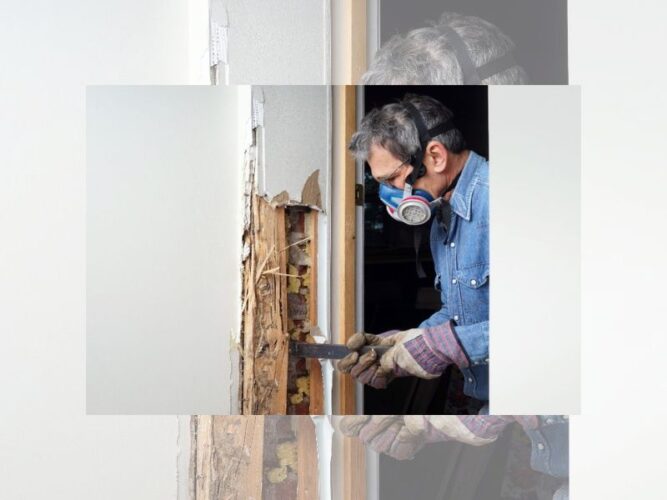Termites pose a significant threat to wooden structures, causing extensive damage if left unchecked. In 2023, homeowners have access to advanced techniques and innovative solutions to repair termite-damaged wood effectively.
This article will guide you through the process of repairing termite-damaged wood, ensuring the structural integrity and aesthetic appeal of your wooden assets.
Identifying Termite Damage
Before initiating the repair process, it is crucial to identify termite damage accurately. Signs of termite infestation include hollowed or damaged wood, mud tubes, discarded wings, or frass (termite droppings).
Thoroughly inspect the affected area to determine the extent of damage and the presence of active termites.
Eliminating Termite Infestation
Before repairing termite-damaged wood, it is essential to eliminate the underlying termite infestation to prevent further damage. Consult a professional pest control service to assess and eradicate the termite colony effectively.
They may employ various techniques, such as chemical treatments, baiting systems, or fumigation, depending on the severity of the infestation.
Removing Damaged Wood
Once the termite infestation has been eliminated, carefully remove the damaged wood to facilitate repairs. Use a chisel, pry bar, or similar tools to detach the damaged sections while ensuring minimal disruption to the surrounding areas.
Dispose of the infested wood properly, as it may contain hidden termite eggs or larvae.
Reinforcing the Structure
Inspect the remaining wooden structure for additional signs of termite damage. Strengthen any weakened areas by adding support, such as additional beams or braces.
This step ensures the structural integrity of the repaired wood and helps prevent future termite damage.
Filling and Patching
After removing the damaged wood, it is time to fill and patch the voids. Select an epoxy-based wood filler or a similar product suitable for termite-damaged wood repairs. Follow the manufacturer’s instructions for mixing and application.
Apply the filler into the holes, gaps, or cracks, ensuring even coverage and a smooth finish. Allow the filler to dry completely before proceeding to the next step.
Sanding and Smoothing
Once the filler has cured, use sandpaper or a sanding block to smooth the repaired areas. Start with coarse grit sandpaper and gradually move to finer grits until the surface is level and uniform.
This step not only improves the appearance of the repaired wood but also prepares it for further treatment and finishing.
Applying Wood Preservatives
To prevent future termite infestation and damage, apply a wood preservative or termite-resistant treatment to the repaired areas.
These treatments contain chemicals that deter termites and protect the wood from future attacks. Follow the manufacturer’s instructions for application, ensuring complete coverage. Allow the preservative to dry thoroughly before proceeding.
Matching Finishes
To achieve a seamless appearance, it is essential to match the finishes of the repaired wood with the surrounding areas. Identify the type of wood and its finish, such as paint, stain, or varnish.
Select a suitable product that matches the existing color and finish. Apply the product carefully, blending it with the surrounding wood to achieve a consistent look.
Regular Maintenance and Prevention
Repairing termite-damaged wood is only the first step in safeguarding your wooden structures. Implement regular maintenance practices to identify early signs of termite activity or damage.
Inspect your property periodically for any changes in wood condition, and address potential issues promptly. Additionally, consider preventive measures such as termite barriers, regular inspections, and treating exposed wood with protective coatings.
Conclusion
In 2023, repairing termite-damaged wood has become more efficient and effective with advanced techniques and solutions. By following the steps outlined in this article, you can restore the integrity and beauty of your wooden assets while preventing future termite infestation.
Remember, if the damage is extensive or if you are unsure about the repair process, it is always advisable to seek professional assistance to ensure the best possible outcome

